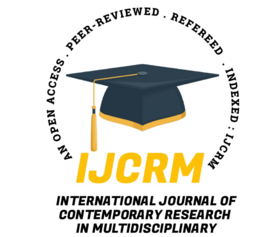International Journal of Contemporary Research In Multidisciplinary, 2025;4(4):28-32
Comparing Two Methods to Reduce Hamstring Tightness from Prolonged Sitting in Sedentary Individuals
Author Name: Dr. Ashish Jaiswal; Dr. Ruchi Mishra; Dr. Sanket Bajpai; Dr. Sanjive K. Jha;
Paper Type: research paper
Article Information
Abstract:
Prolonged sitting, a common feature of modern sedentary lifestyles, is associated with adaptive shortening of the hamstring muscles, resulting in decreased flexibility, postural imbalances, and an increased risk of lower back pain and musculoskeletal injuries. This study investigated the comparative effectiveness of Muscle Energy Technique (MET) and passive stretching in improving hamstring flexibility among sedentary young adult males. Sixty sedentary male participants aged 20–30 years with hamstring tightness, defined as ≥15° on the Active Knee Extension Test (AKET), were randomly divided into two groups of 30 each. One group received MET while the other received passive stretching, with both interventions applied for one week across sessions consisting of three repetitions. Hamstring flexibility was assessed pre- and post-intervention using the AKET. Statistical analysis with paired and unpaired t-tests (p < 0.05) revealed that both groups experienced significant improvement in hamstring flexibility. Group A (MET) improved from 51.14° ± 3.67 to 46.00° ± 2.73, while Group B (passive stretching) improved from 51.10° ± 2.86 to 49.00° ± 2.26. However, no statistically significant difference was found between the two techniques. These results suggest that both MET and passive stretching effectively reduce hamstring tightness. MET may act through neuromuscular mechanisms such as autogenic and reciprocal inhibition, whereas passive stretching targets the viscoelastic properties of muscles. Although MET showed a slightly greater numerical improvement, the techniques demonstrated comparable efficacy. Therefore, either method can be utilized effectively depending on individual preferences, clinical settings, or therapist discretion. This study supports the inclusion of both interventions in physiotherapy strategies aimed at enhancing flexibility in sedentary individuals.
Keywords:
Hamstring tightness, sedentary lifestyle, Muscle Energy Technique, passive stretching, flexibility, physiotherapy
How to Cite this Article:
Dr. Ashish Jaiswal,Dr. Ruchi Mishra,Dr. Sanket Bajpai,Dr. Sanjive K. Jha. Comparing Two Methods to Reduce Hamstring Tightness from Prolonged Sitting in Sedentary Individuals. International Journal of Contemporary Research in Multidisciplinary. 2025: 4(4):28-32
Download PDF





